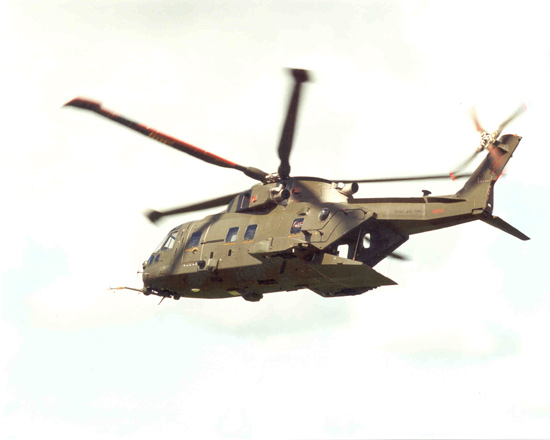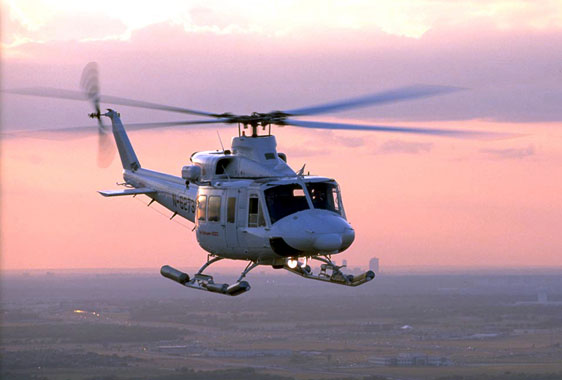
Flight Science & Technology Research Group
Active Control Concepts for Handling Qualities, Envelope Protection and Structural Load Alleviation
Department Home
Page
Courses
Simulation
Facilities
Feedback: mdw@liv.ac.uk
Rotorcraft exhibit handling qualities that make them difficult and tiring to fly and while their remarkable capabilities enable them to undertake a wide variety of difficult tasks, often these require very high pilot workload. To this end, there are sound reasons for replacing mechanical and hydraulic control systems with electrical and optical ones, as is the trend, with task-tailored control laws. How best to use the freedom that this tailoring gives is now one of the main questions.
 The
introduction of active control technology (ACT) makes the
implementation of new and potentially better control laws possible,
and with these comes the possibility of utilizing more of the
potential of a given aircraft: higher performance, the ability to
operate more safely, more economically, in worse conditions, and
closer to the extremes of the flight envelope. Better control
systems, designed more quickly and with less trial-and-error and
flight test development, will be achievable if the complexity of
the helicopter's dynamics are accurately modeled and taken into
account ab initio.
The
introduction of active control technology (ACT) makes the
implementation of new and potentially better control laws possible,
and with these comes the possibility of utilizing more of the
potential of a given aircraft: higher performance, the ability to
operate more safely, more economically, in worse conditions, and
closer to the extremes of the flight envelope. Better control
systems, designed more quickly and with less trial-and-error and
flight test development, will be achievable if the complexity of
the helicopter's dynamics are accurately modeled and taken into
account ab initio.
We aim to address this by developing and integrating techniques for modeling, identification and control. The emphasis on multi-disciplinary design and optimization provides a rich new focus to this theme. The project involves collaboration with NRC Canada, European research centres and Industry (including Agusta-Westland, BAE Systems and QinetiQ). The project will use a sophisticated six-axis Flight Simulator at the University of Liverpool, and fly-by-wire research helicopter.
The
project has two strands, one related to model development, the
other to control for handling qualities, flight envelope protection
and load alleviation (HQ, FEP and SLA) using RSF. Use of a fully
instrumented research helicopter with rotor blade measurements will
enable us to investigate some of the deficiencies in existing
mathematical models and to produce better models. It will enable us
to investigate the advantages that result from feeding back rotor
states, and to investigate the extent to which, given better
models, these advantages could be realized by estimating, as
opposed to measuring, rotor states.
 The
project uses both ground-based and airborne simulation to test new
types of control law. The Bibby Flight Simulator at Liverpool
features six-axis motion, 6-channel visuals and a programmable
force feel system. This will enable sophisticated testing and
analyses to be performed prior to flight test. We will conduct
experiments to shed light on basic issues relating to modeling,
robust stability and performance. Our prime objective is to
investigate the benefits of novel active control concepts applied
to the mutual improvement of HQs, FEP and SLA. We will use flight
test data from NRC, and develop linear and non-linear models. These
will help us to further the understanding of some of the effects of
feedback control on the rotor, and thereby to develop improved
design procedures.
The
project uses both ground-based and airborne simulation to test new
types of control law. The Bibby Flight Simulator at Liverpool
features six-axis motion, 6-channel visuals and a programmable
force feel system. This will enable sophisticated testing and
analyses to be performed prior to flight test. We will conduct
experiments to shed light on basic issues relating to modeling,
robust stability and performance. Our prime objective is to
investigate the benefits of novel active control concepts applied
to the mutual improvement of HQs, FEP and SLA. We will use flight
test data from NRC, and develop linear and non-linear models. These
will help us to further the understanding of some of the effects of
feedback control on the rotor, and thereby to develop improved
design procedures.
Members: